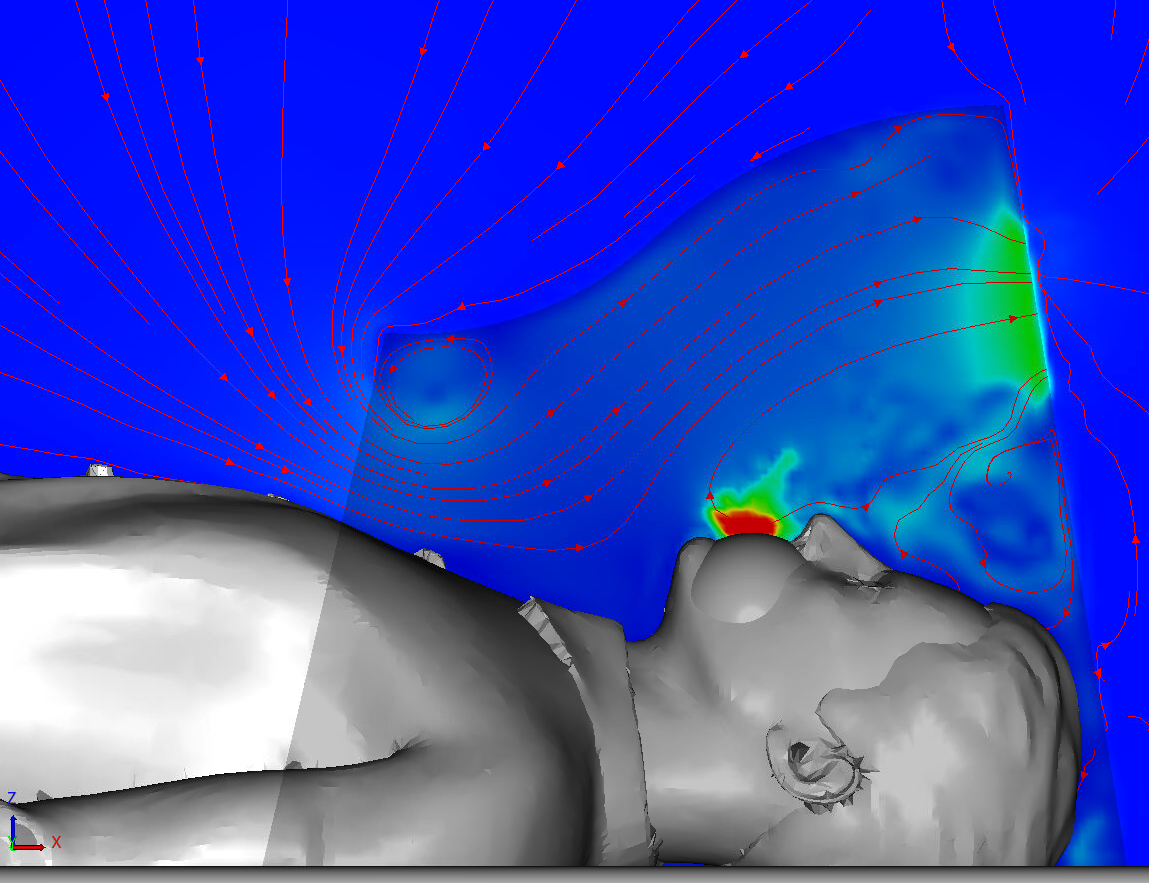Second Simulation
Got some results. Overall this box seems to do better than the first.
Jonathan showed me how to let the baseline air currents establish before the sneeze. Here's what that (relatively) steady state solution looks like. There's still an eddy near the opening, but it doesn't reach back to right in front of the patient's mouth like last time.
Note that I again used a mass flux rate of 1 liter per second, the same as the first simulation. So the conditions are comparable, other than that the first simulation didn't start with any baseline currents.
To get a sense of how the system behaves when perturbed by a sneeze, there are three videos here.
- particles.mp4 comes from Jonathan (it's much prettier than mine) and shows all the particle trajectories
- particle_density.mp4 shows an averaged version of the particles (i.e. their densities as a volumetric render)
- airflow.mp4 shows the magnitude of the air velocity along with stream lines (note that it runs twice as slow as the others)
